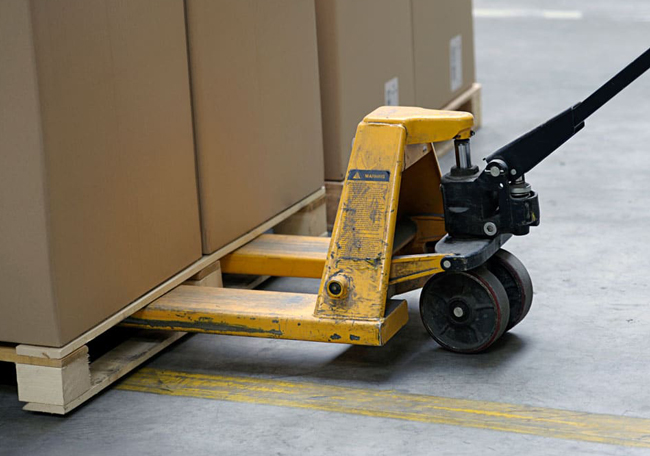Pallet jacks are among the most important items in warehouses and construction sites. Pallet jacks are used for transferring small items over short distances. They are less expensive and easier to operate than forklifts and safer than manual labor. Manual pallet jacks are less expensive and easier to maintain than electric pallet jacks. They are a viable option for small to medium-sized warehouses or construction sites. Here are four straightforward procedures for operating a manual pallet jack.
- In order to use a handheld palled, you will need to place your hands on the metal steering handle behind the pallet jack, toward the outward-facing prongs. The prongs are the two horizontal metal components that raise the pallets. Find the plastic release lever on the handle; it is normally attached to the middle bar. It might be a different color to help it stand out, but it should still be apparent.
- Move the pallet jack to the desired location and activate the lever to lower the prongs. Push the pallet jack over to the pallet you want to transfer. Lower the prongs to about one inch off the ground by pressing the release lever up and inward. If the prongs are already lowered, pressing the lever will not cause them to move.
- When the prongs are entirely lowered, slip them beneath the pallet you want to transport. If they are still too high to readily slide beneath the pallet, they may not have been completely lowered, and you should push the release lever again. Make sure the prongs go all the way through the underside of the pallet so the wheels rest on the floor and not on the pallet.
- Pull the metal handle and the entire middle bar toward you at an angle after the prongs are positioned beneath the pallet. You should feel some resistance and see the prongs gradually raise the pallet up. Repeat this numerous times until the prongs are not dragging on the floor.







